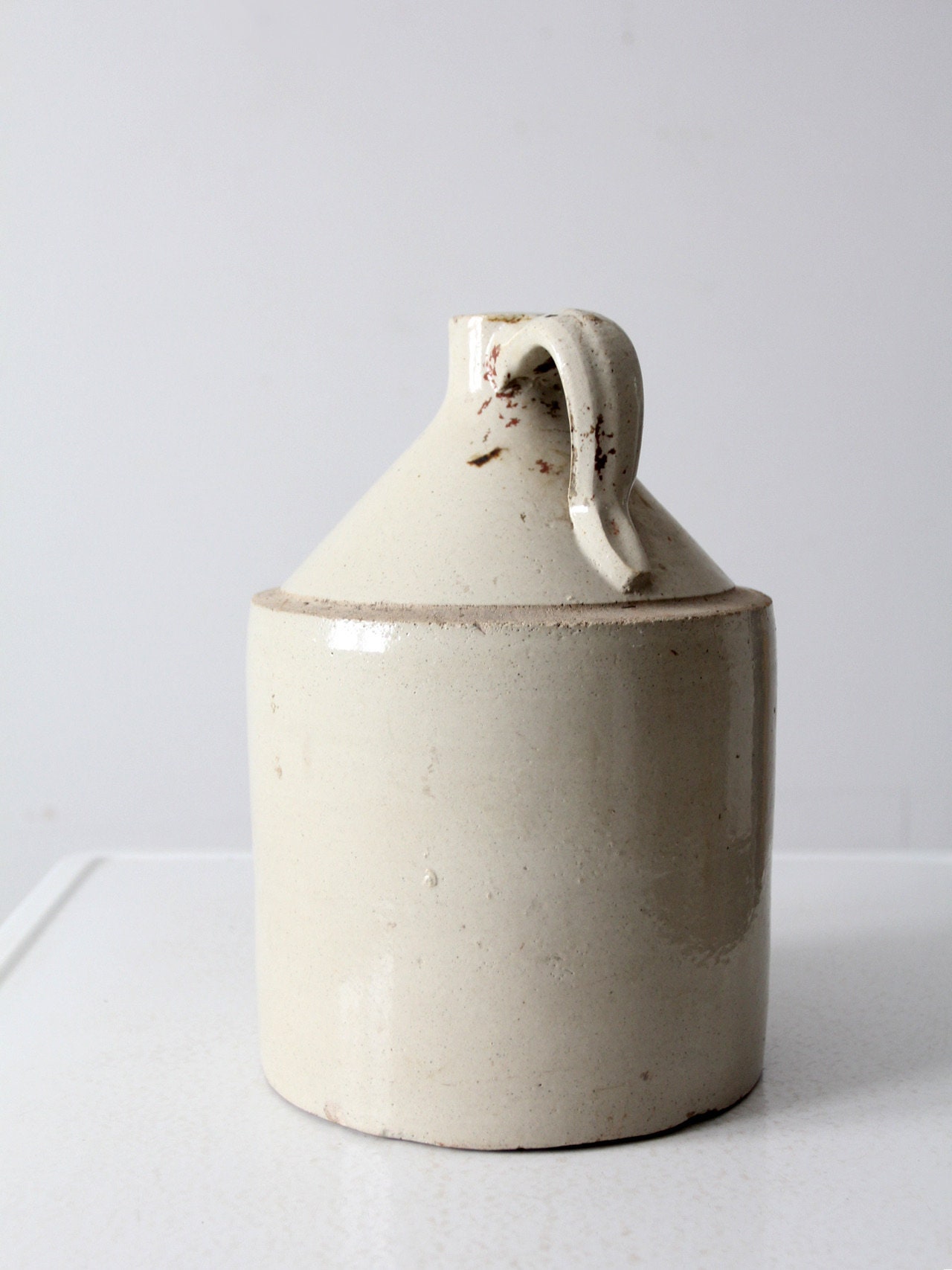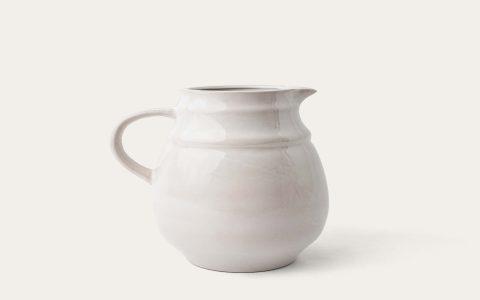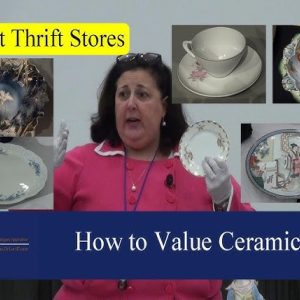Vintage stoneware jugs are robust ceramic vessels, typically crafted from dense, non-porous clay fired at high temperatures. These utilitarian and often decorative items date primarily from the late 19th to mid-20th centuries, prized for their durability and historical charm.
Key Characteristics
- Material: Fired stoneware clay, making them impermeable to liquids even without a glaze.
- Durability: Known for their sturdy construction, designed for everyday use.
- Glaze: Often feature distinctive glazes such as salt glaze (resulting in an orange-peel texture, frequently with cobalt blue decoration), Bristol glaze (a smoother, often white or cream opaque glaze), or Albany slip (a dark brown glaze).
- Form: Typically include a handle, a body of varying capacity (from pints to several gallons), and a spout or pouring lip.
- Decoration: Can range from simple, unadorned surfaces to incised patterns, applied motifs, or stamped advertising from merchants or producers.
Common Types and Styles
Vintage stoneware jugs vary widely based on their origin, era, and intended purpose:
- Whiskey/Spirit Jugs: Often feature maker's marks or distillery names, sometimes with specific capacity markings.
- Cider or Vinegar Jugs: Larger capacity jugs for storing fermented beverages or preserving liquids.
- Advertising Jugs: Commissioned by businesses, these jugs display company names, logos, or product information, often in transfer print or stenciled designs.
- Artisan Pieces: Hand-thrown jugs showing individual craftsmanship, sometimes with unique glazes or decorative touches reflecting regional styles.
Identifying Features and Value Considerations
Several factors contribute to the identification and collectibility of vintage stoneware jugs:

- Maker's Marks: Impressed, incised, or stamped marks can identify the potter, pottery, or region of origin (e.g., Red Wing, Doulton, specific American or European potteries).
- Glaze Type and Condition: The type of glaze, its evenness, color, and any decorative elements (like cobalt blue designs on salt-glazed pieces) are important. The condition of the glaze, including crazing or flaking, affects value.
- Form and Size: Unusual shapes, sizes, or specific design features can increase rarity and desirability.
- Decoration and Detail: Elaborate hand-painted designs, intricate applied decorations, or clear, crisp advertising text enhance appeal.
- Condition: The presence of chips, cracks, hairlines, or repairs will significantly impact value. Original stoppers or lids, if applicable, are a plus.
Care and Modern Usage
Care: Clean vintage stoneware with mild soap and water. Avoid abrasive cleaners or scouring pads. Sudden temperature changes can cause cracking, so avoid placing cold jugs in hot water or vice versa.
Usage: While many were originally functional, today vintage stoneware jugs are popular as decorative items, serving as vases for flowers, rustic kitchen accents, or standalone display pieces that add character and history to an interior.












